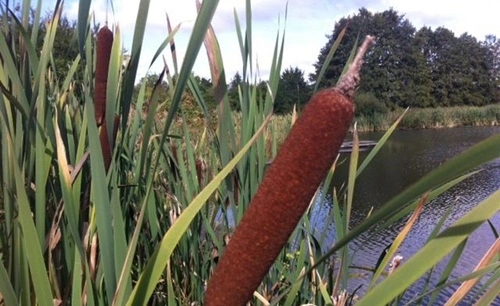Yes, it can be illegal to pick cattails in some areas, depending on local regulations, conservation laws, and whether the cattails are growing on protected land. While cattails are often considered a common plant, they play a crucial role in wetland ecosystems and may be protected by state or federal regulations.
Importance of Cattails in Ecosystems
Cattails, often found in wetlands, marshes, and along the edges of ponds, are more than just plants. They provide:
- Habitat for Wildlife
- Many species of birds, insects, and aquatic animals rely on cattails for shelter and nesting.
- Water Filtration
- Cattails help filter pollutants and sediment from water, maintaining the health of wetlands.
- Erosion Control
- Their root systems stabilize soil and reduce erosion along water bodies.
Because of these ecological benefits, cattails are often protected in areas where wetland conservation is a priority.
Legal Considerations for Picking Cattails
- State and Local Laws
- Some states protect native wetland plants, including cattails. Removing or damaging these plants without permission may result in fines or other penalties.
- For example, Minnesota has regulations under its Wetland Conservation Act that protect plants like cattails in designated areas.
- Protected Land
- Picking cattails on federally or state-owned land, such as wildlife refuges or conservation areas, is generally prohibited without a special permit.
- Private Property
- If cattails are on private property, you must obtain the landowner’s permission to pick them. Removing plants without consent can be considered trespassing or theft.
- Endangered Species Protection
- While cattails themselves are not typically endangered, disturbing habitats that contain endangered plants or animals may violate conservation laws.
When Is It Legal to Pick Cattails?
- Personal Property
- If the cattails are on your own property and local laws do not prohibit their removal, you can legally pick them. However, it’s still wise to consider their ecological role.
- With Permits
- In some areas, you may obtain permits to harvest cattails for specific purposes, such as traditional crafts, research, or ecological restoration projects.
- Non-Protected Areas
- Cattails growing in non-protected areas, such as along public roadsides (where laws permit), may be picked with caution, provided you are not violating trespassing or conservation laws.
Consequences of Picking Cattails Illegally
- Fines and Penalties
- Violating wetland conservation laws can result in fines ranging from a few hundred to several thousand dollars, depending on the jurisdiction.
- Environmental Impact
- Removing cattails disrupts ecosystems, potentially harming wildlife and water quality.
- Legal Action
- Picking cattails on private property without permission may lead to civil or criminal charges.
Ethical Considerations
Even where picking cattails is legal, it’s important to consider their environmental significance. Removing too many cattails from an area can lead to soil erosion, loss of wildlife habitat, and degradation of water quality. Sustainable practices, such as harvesting only what is necessary and leaving plenty for wildlife, are encouraged.
Common FAQs
Q1. Can I pick cattails in a public park?
Ans: No, in most cases, public parks have rules that prohibit removing plants or wildlife. Always check local regulations.
Q2. Are cattails protected under federal law?
Ans: Cattails themselves are not federally protected, but their habitats (wetlands) may fall under the protection of the Clean Water Act or other conservation laws.
Q3. Do I need a permit to pick cattails?
Ans: In some states, you may need a permit to pick cattails, especially if they are in a protected area or wetland.
Q4. Can I grow cattails at home?
Ans: Yes, cattails can be cultivated in backyard ponds or wetland gardens, provided you follow local regulations regarding invasive plants.
Q5. What are cattails used for?
Ans: Cattails have traditional uses in crafts, such as weaving baskets or mats, and as a food source. However, their ecological role is far more critical.
Q6. What happens if I pick cattails illegally?
Ans: You could face fines, legal penalties, or even be required to restore the damaged area, depending on the severity of the violation.
Conclusion
Picking cattails can be illegal in certain circumstances, especially on protected land or in areas with conservation laws. It is essential to research local regulations, respect private property, and consider the environmental impact before removing cattails. Sustainable practices and proper permits, when required, can ensure compliance with the law and support ecological balance.


